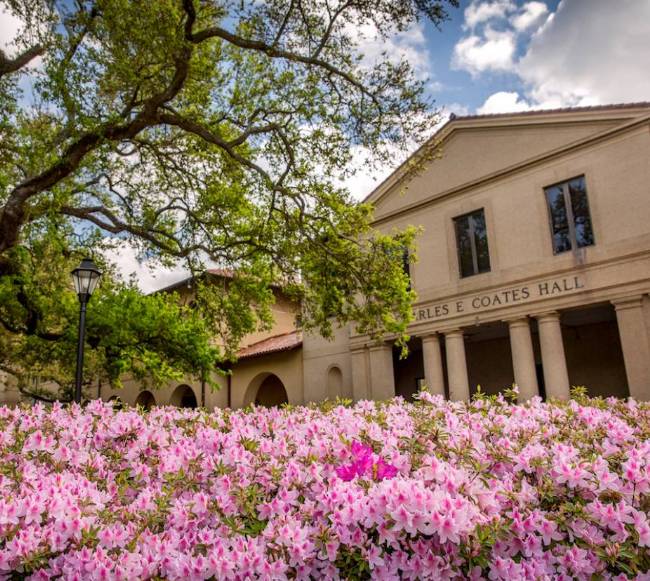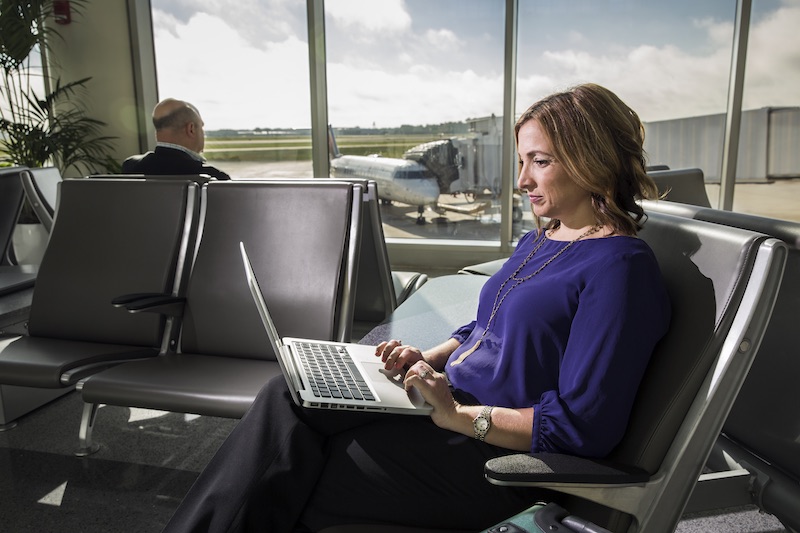Weather Science with Purpose: LSU Lab Helps Louisiana Prepare for Hurricanes, Drought, even Saharan Dust
July 22, 2025
Any hurricane that forms in the Gulf of America is a direct threat to Louisiana and its neighboring states.
But most seasonal forecasts focus on the entire North Atlantic Basin, including areas where storms may never come close to any land, much less the U.S. Gulf Coast.
A Gulf-specific forecast developed at LSU’s Coastal Meteorology (COMET) Lab addresses that issue by providing storm information specifically geared toward the Gulf region. The lab is run by Paul Miller, an associate professor at LSU who founded it in 2019.
— Video by Elizabeth Perez
READ MORE: Five storms predicted in the Gulf this season, says COMET Lab
“We decided that a Gulf-specific forecast could help state officials and Gulf-area residents better understand how active the upcoming season might be in their part of the Atlantic,” said Miller, who teaches in Department of Oceanography & Coastal Sciences in the College of the Coast & Environment.
Miller said the LSU-Velocity Risk Gulf Hurricane Outlook is one example of how the COMET Lab delivers real benefits to Louisiana. “A lot of forecasts tend to align with each other each year. But ours works a lot differently than some of the other forecasts that are geared towards larger areas of the ocean,” he said.
“We’re not the world’s leading hurricane research lab—and we don’t try to be. Instead, we prioritize meeting the largest research gaps relevant to Louisiana residents, spanning a wide variety of weather hazards.
“We want to make sure Louisianans experience a clear return-on-investment from our lab’s activities.”
Ways the lab supports the state also include:
- Helping forecast storm surge in real time and informing the decision on when to close flood barriers before a tropical system hits land.
- Developing rainfall models to support flood prevention efforts.
- Studying weather patterns that cause drought and low coastal water levels that can lead to marsh loss during dry spells on the Gulf Coast.
Saharan Dust Research
One area of study that incorporates both air quality and tropical weather is the lab’s research on Saharan dust clouds, which are blown across the Atlantic in an air mass called the Saharan Air Layer, or SAL.
“So, this sort of far-off distant concept of Saharan dust is actually something that is kind of important to folks here in Louisiana,” Miller said.
This dust can shut down thunderstorm activity in the U.S. Caribbean territories, a key area of research in the COMET Lab, and cause respiratory problems when it reaches the Southeast U.S. The SAL can also suppress hurricane activity in the Atlantic.
“Our lab just launched a new project with the Office of Naval Research to determine how dust-dimmed sunlight can affect ocean temperatures in the Atlantic’s most active hurricane breeding grounds,” Miller said.
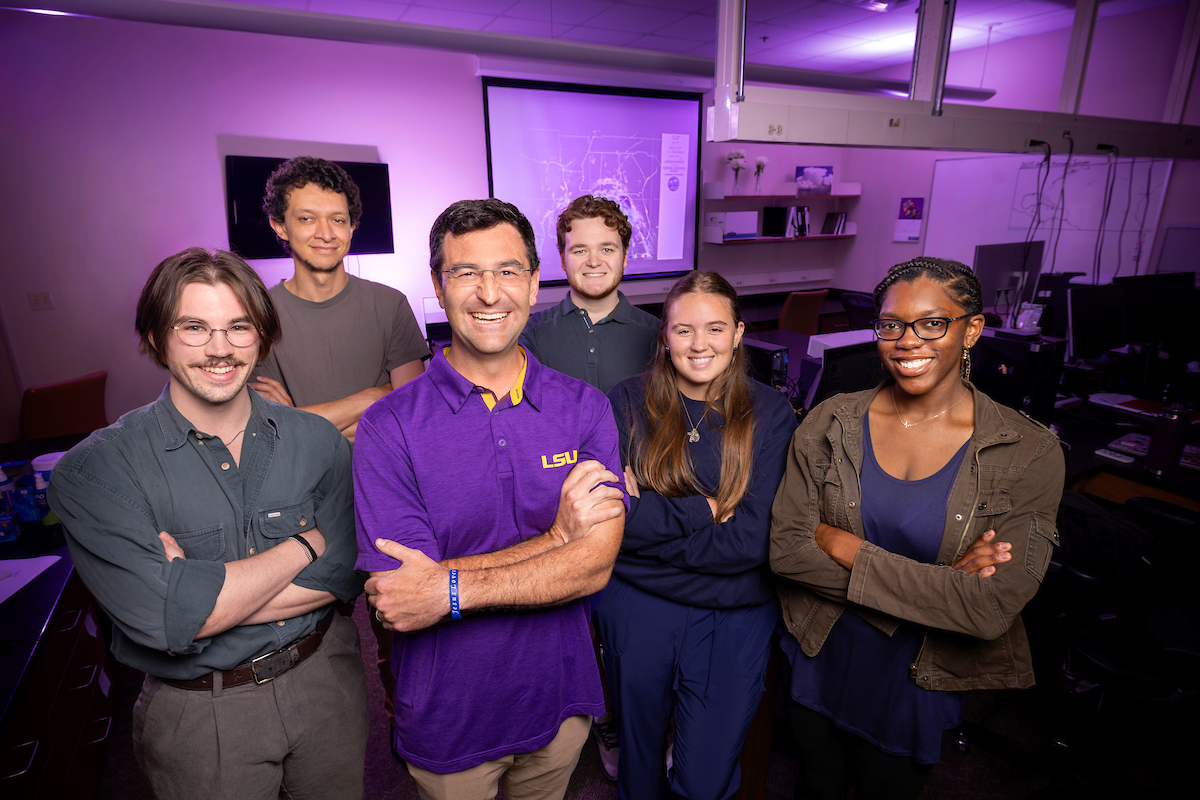
Paul Miller, head of LSU’s Coastal Meteorology (COMET) Lab, center in purple shirt, with student lab workers, from left, Philip Johnson, Edwin Torres-Moya, Hank Dolce, Abby Rehagen, and Kayla Thomas.
– Photos by Eddy Perez
Students: The ‘Heartbeat’ of the Lab
The lab currently houses three PhD students, one MS student, and a rotation of undergraduates. While the lab studies weather, the research pulls in many disciplines.
“Students are the heartbeat of the COMET Lab,” Miller said, emphasizing that they lead essentially all of the technical work, harvesting data from cloud repositories, writing computer code, initializing model simulations on the LSU supercomputing clusters, and sharing their results at national conferences.
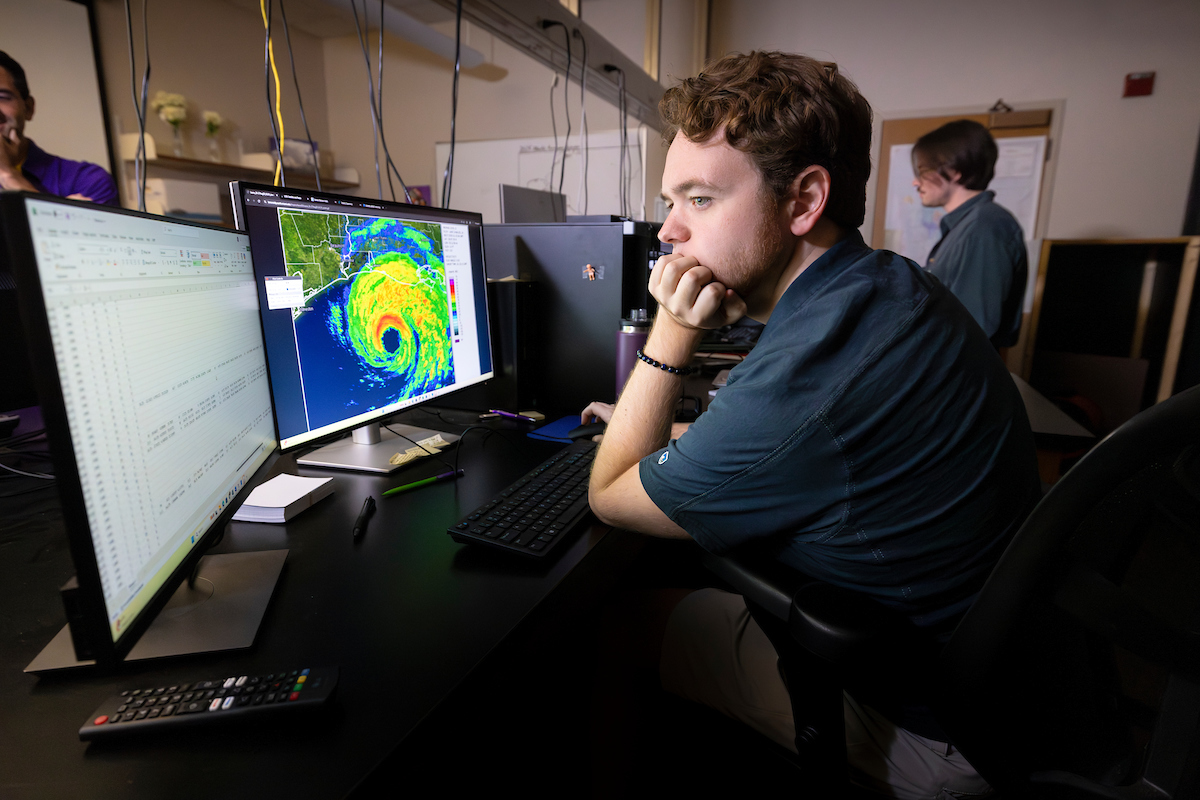
Student Hank Dolce in the COMET Lab.
“Without their hard work, we really wouldn’t have nearly the impact that we do across the state.”
Hank Dolce of Austin, Texas, a first-year PhD student in the LSU Coastal Meteorology program, said he appreciates how lab students involved in different projects interact and share information to benefit each other’s work.
“Having that interaction between all of us in the lab is very important—to have a camaraderie and an interdisciplinary research aspect to your lab group,” he said.
Dolce said working in the COMET Lab is helping equip him for a future in forecasting or in an academic research role.
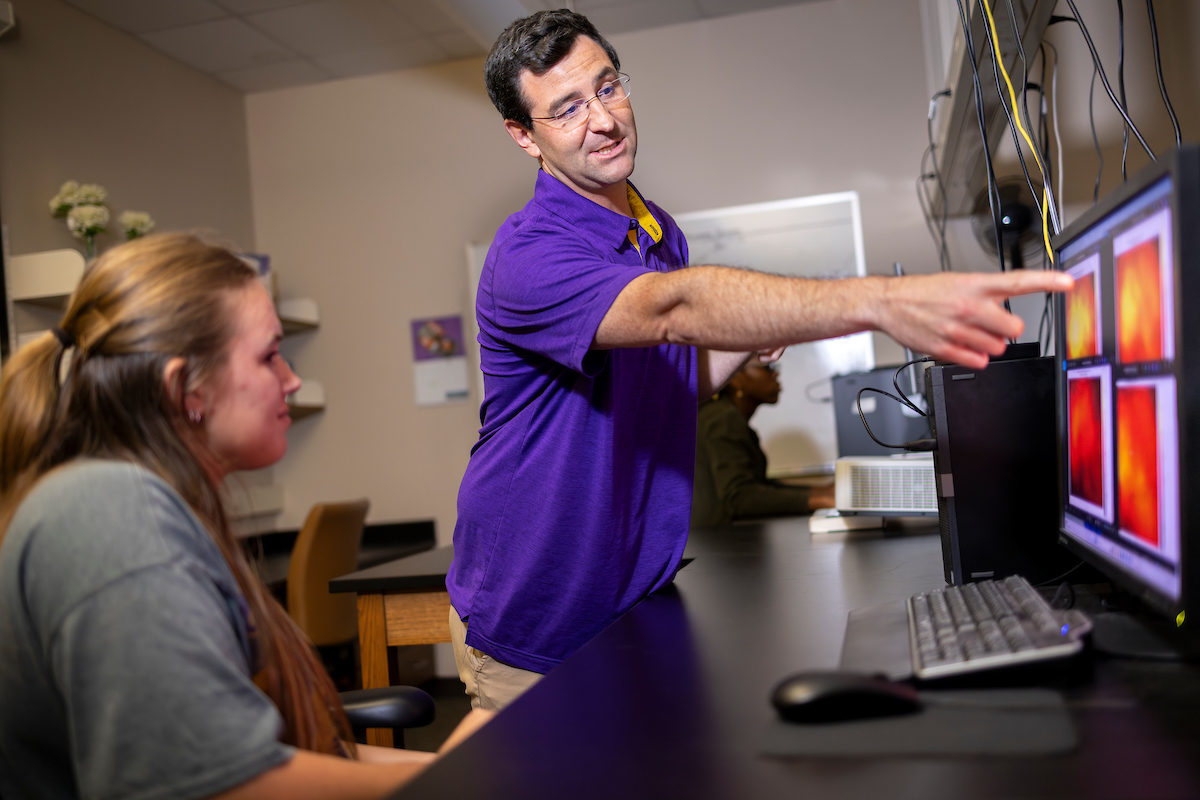
Student Abby Rehagen works with COMET Lab director Paul Miller.
Abby Rehagen of Freeburg, Mo., is a first-year master’s student who earned her Coastal and Environmental Sciences degree at LSU. At the COMET lab, she is working with simulated storm tracks to identify and understand trends to expect in future hurricanes.
She said the alignment between her future goals and LSU coastal and science programs made LSU a good choice for her. At the COMET Lab, she is learning new skillsets, often assisted by fellow team members, that will benefit her wherever her future takes her.
“The people here, especially the people in our lab, are always there to help me. I can come to them with any problem, and they all have some skillset that can address my issue.”
Miller touts an impressive list of student outcomes for former COMET Lab team members.
“Our alumni now work for the EPA, Department of Energy, U.S. Naval Research Laboratory at Stennis Space Center, and the Institute for Business and Home Safety, a private-industry research consortium of building insurers,” Miller said.
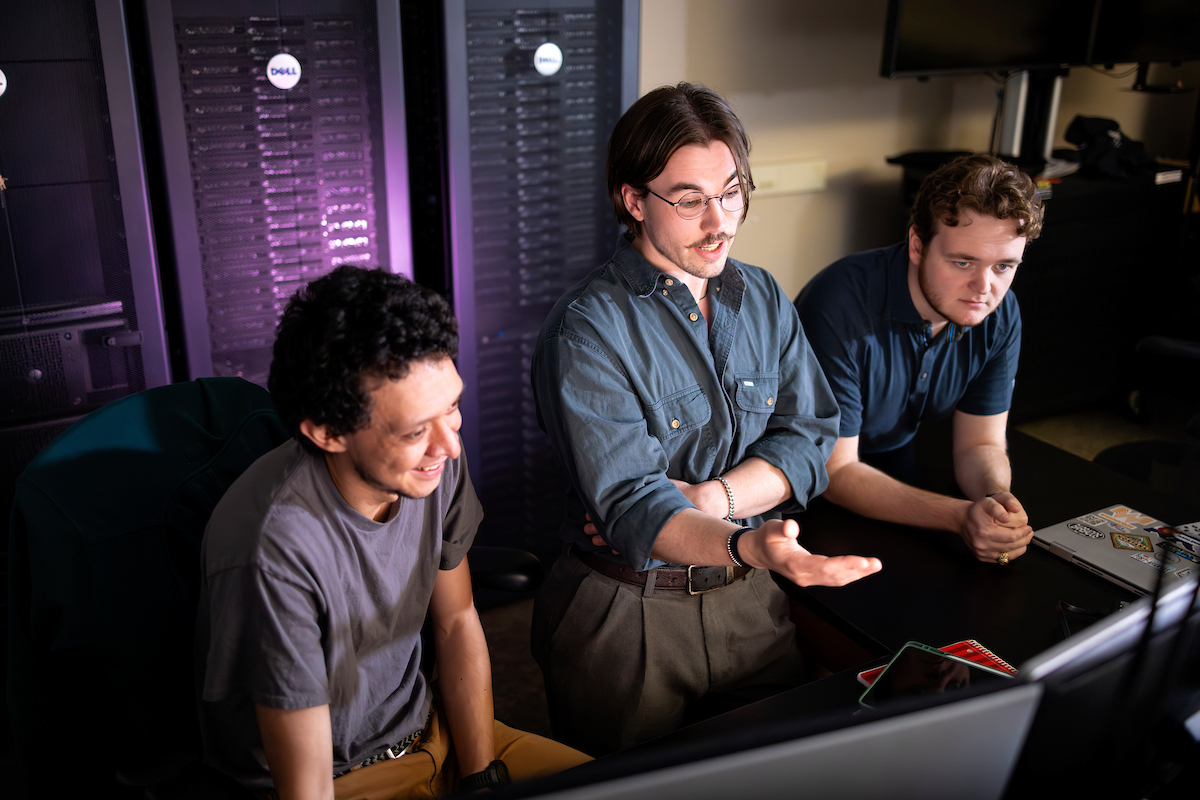
Students working in the COMET Lab.
In May 2025, LSU announced a new major, the Bachelor of Science in Coastal Meteorology, in the Department of Oceanography & Coastal Sciences.
“We’re the state’s largest avenue for developing graduate-level meteorologists. As our undergraduate program begins to grow, residents will gradually begin to see more LSU Coastal Meteorology alumni on their TV broadcasts or issuing their tornado warnings.”
Beyond instruction and training, the lab serves as a valuable asset for Louisiana, supporting state officials in their decision-making during impending hurricanes as well as decisions about how to design future storm-resilient infrastructure.
“We may not hold press conferences, but our fingerprints are on many decision-making processes that will inform present and future storm resiliency in Louisiana,” Miller said.
A Path to LSU
Miller said he always dreamed of being a television weatherman. But an internship during his time at Virginia Tech taught him that the job didn’t feed his need to dive into the “nuts and bolts” of weather.
“I thought weather was way too interesting to distill into a three-minute segment,” he said. “I realized being an academic allowed me to dive into all the gory detail, push the frontier of our understanding, and nab a captive audience of students for 75 minutes.”
After five years as a graduate student and postdoctoral researcher at the University of Georgia, Miller found a home in Louisiana, which he noted is known for its quantity and variety of active weather.
LSU also checked off many important boxes, including top-tier high-performance computing systems, internal funding opportunities, highly talented contracting staff, broad administrative support, and a commitment to elevating the visibility of the university’s work to the public.
“I liked that LSU (and, to some extent, Louisiana) was a relative “blank slate” in terms of its existing meteorology programs, so I could really have an impact on growing the atmospheric science footprint in the state,” he said.
LSU's Scholarship First Agenda is helping achieve health, prosperity, and security
for Louisiana and the world.Next Step
